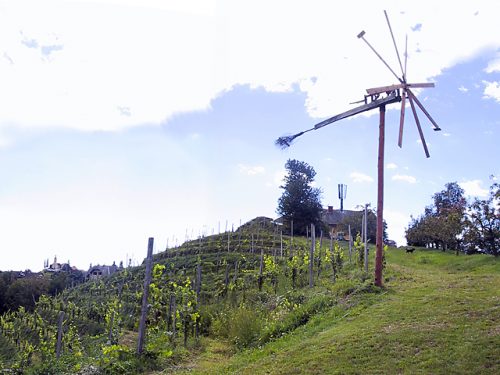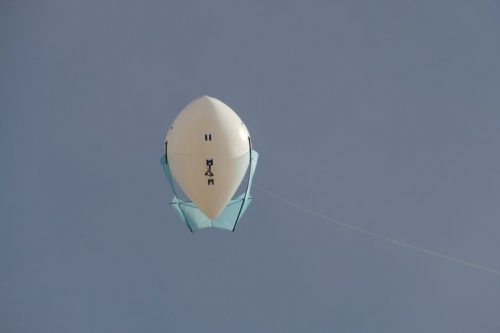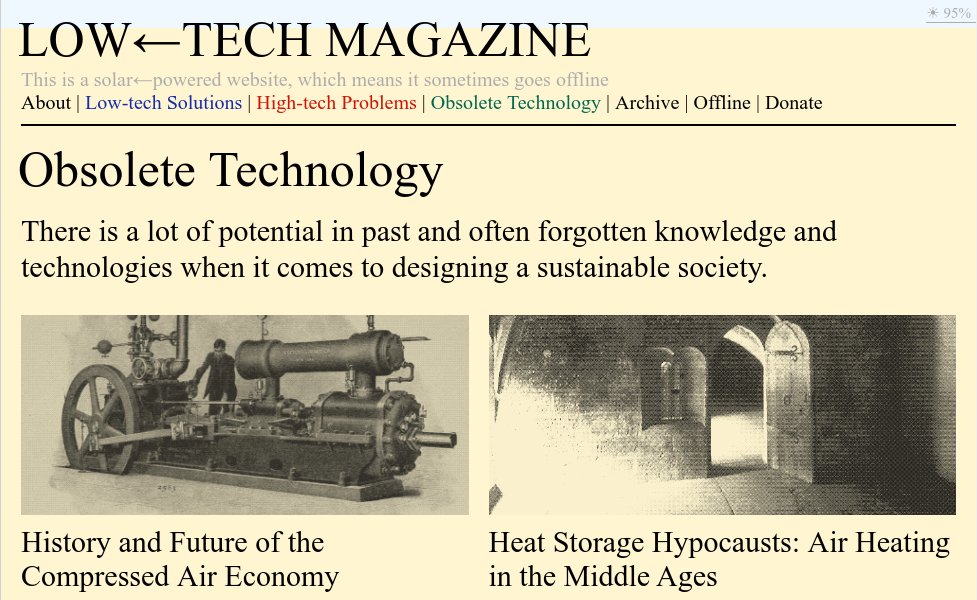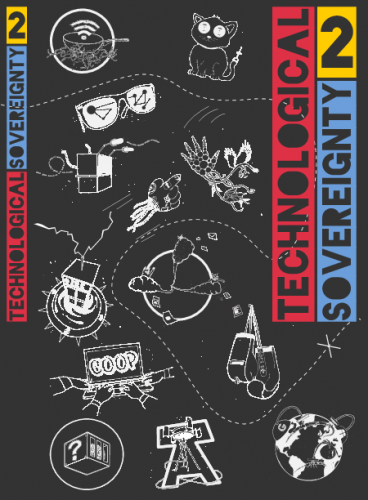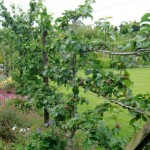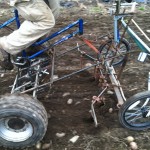A “klopotec” or “klapotets” is a wooden mechanical device on a high wooden pole, similar to a windmill. It is used as a bird scarer in the vineyards of traditional wine-growing landscapes of Slovenia, Austria, and Croatia. The first written mentions of the technology date to the second half of the 18th century, whereas its oldest depictions date to the first half of the 19th century. [Read more…]
Helium Powered Drones
Airpup is an exceptionally small kite balloon (aka an aerostat), which is a quiet, easy to use alternative for drones. Kite balloons can fly for days. They have no active controls, no software, no moving parts — they just point into the wind and follow where towed.
Kite balloons can be used for aerial photography, as a replacement for a radio tower, or for capturing weather data. Airpup is based on early 20th century kite balloons. It is the first new kite balloon design in 25 years. See also: Kite aerial photography.
The Anatomy of Artificial Intelligence
In 1770, Hungarian inventor Wolfgang von Kempelen constructed a chess-playing machine known as the Mechanical Turk. His goal, in part, was to impress Empress Maria Theresa of Austria. This device was capable of playing chess against a human opponent and had spectacular success winning most of the games played during its demonstrations around Europe and the Americas for almost nine decades. But the Mechanical Turk was an illusion that allowed a human chess master to hide inside the machine and operate it.
Some 160 years later, Amazon.com branded its micropayment based crowdsourcing platform with the same name. According to Ayhan Aytes, Amazon’s initial motivation to build Mechanical Turk emerged after the failure of its artificial intelligence programs in the task of finding duplicate product pages on its retail website. After a series of futile and expensive attempts, the project engineers turned to humans to work behind computers within a streamlined web-based system.
The spectacle of the machine
Amazon Mechanical Turk digital workshop emulates artificial intelligence systems by checking, assessing and correcting machine learning processes with human brainpower. With Amazon Mechanical Turk, it may seem to users that an application is using advanced artificial intelligence to accomplish tasks. But it is closer to a form of ‘artificial artificial intelligence’, driven by a remote, dispersed and poorly paid clickworker workforce that helps a client achieve their business objectives. As observed by Aytes, “in both cases the performance of the workers who animate the artifice is obscured by the spectacle of the machine.”
This kind of invisible, hidden labor, outsourced or crowdsourced, hidden behind interfaces and camouflaged within algorithmic processes is now commonplace, particularly in the process of tagging and labeling thousands of hours of digital archives for the sake of feeding the neural networks… As we see repeated throughout the system, contemporary forms of artificial intelligence are not so artificial after all… At every level contemporary technology is deeply rooted in and running on the exploitation of human bodies.
Quoted from Anatomy of an AI System, Kate Crawford and Vladan Joler, 2018.
Via: The exploitation, injustice, and waste powering our AI, Katharine Schwab, 2018.
Hardware & Software Info for Solar Powered Website
For those who want to build their own solar powered website, we have released the source code and a manual outlining all hardware and software details.
No Tech Reader #21
- The Problem with Reinforced Concrete. Putting steel inside concrete ruins its potentially great durability.
- The Quieter Life. Adopting traditional values, attitudes and practices in an increasingly nihilistic world.
- Cool People’s Movements. Let’s not confuse ‘the right to be cool’ with the right to a consumer good.
- Life in the Spanish City that Banned Cars. In Pontevedra, the usual soundtrack of a Spanish city has been replaced by the tweeting of birds and the chatter of humans.
- Solar Panels Replaced Tarmac on a Motorway. Here are the Results. Several factors work against this oddly popular idea.
- Opec Predicts Massive Rise in Oil Production over Next Five Years. Increasing demand from airlines will more than offset reductions from electric cars.
- Everything You’ve Been Told about Plastic is Wrong. Recycling is the grown-up version of squeezing our eyes shut, sticking our fingers in our ears and shouting “lalalalalala!”.
- Why Growth Can’t Be Green. New data proves you can support capitalism or the environment—but it’s hard to do both.
- I’ve Seen the Future of Consumer AI, and it Doesn’t Have One. If ever there was a solution looking for a problem, it’s ramming AI into gadgets to show off a company’s machine learning prowess.
- Leave no Dark Corner. China is building a digital dictatorship to exert control over its 1.4 billion citizens.
First two links via Wrath of Gnon. Last link via John Butler. Penultimate link via Slashdot.
Technological Sovereignty
We deserve to have other technologies, something better than what we nowadays call Information and Communication Technologies. This book delves into the guiding principles of technological sovereignty and proposes new theoretical and practical descriptions of some initiatives developing free technologies. It deals with its psychological, social, political, ecological and economic costs while it relates experiences to create Technological Sovereignty.
The authors bring us closer to other ways of desiring, designing, producing and maintaining technologies. Experiences and initiatives to develop freedom, autonomy and social justice while creating autonomous mobile telephony systems, simultaneous translation networks, leaks platforms, security tools, sovereign algorithms, ethical servers and appropriate technologies among others.
From the introduction to Technological Sovereignty Vol.2,, which is available in English, French, and Spanish. The first volume is available in French and Spanish only.
